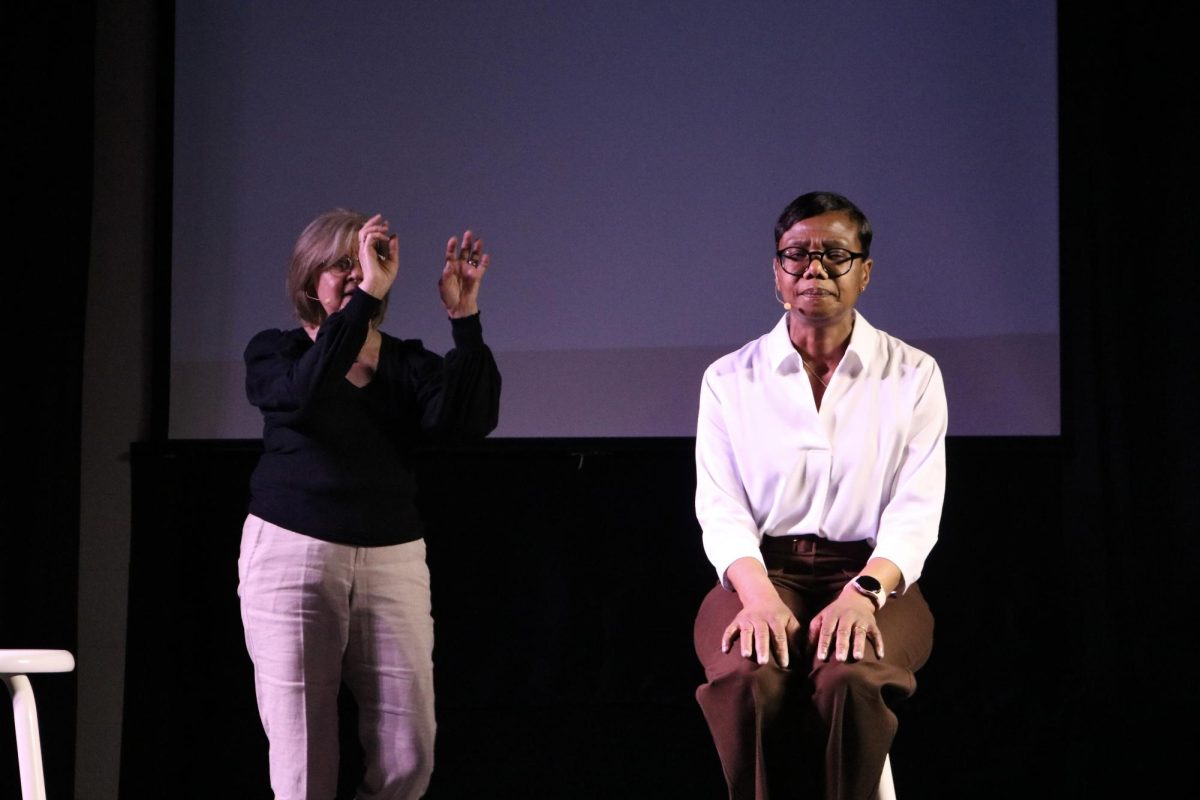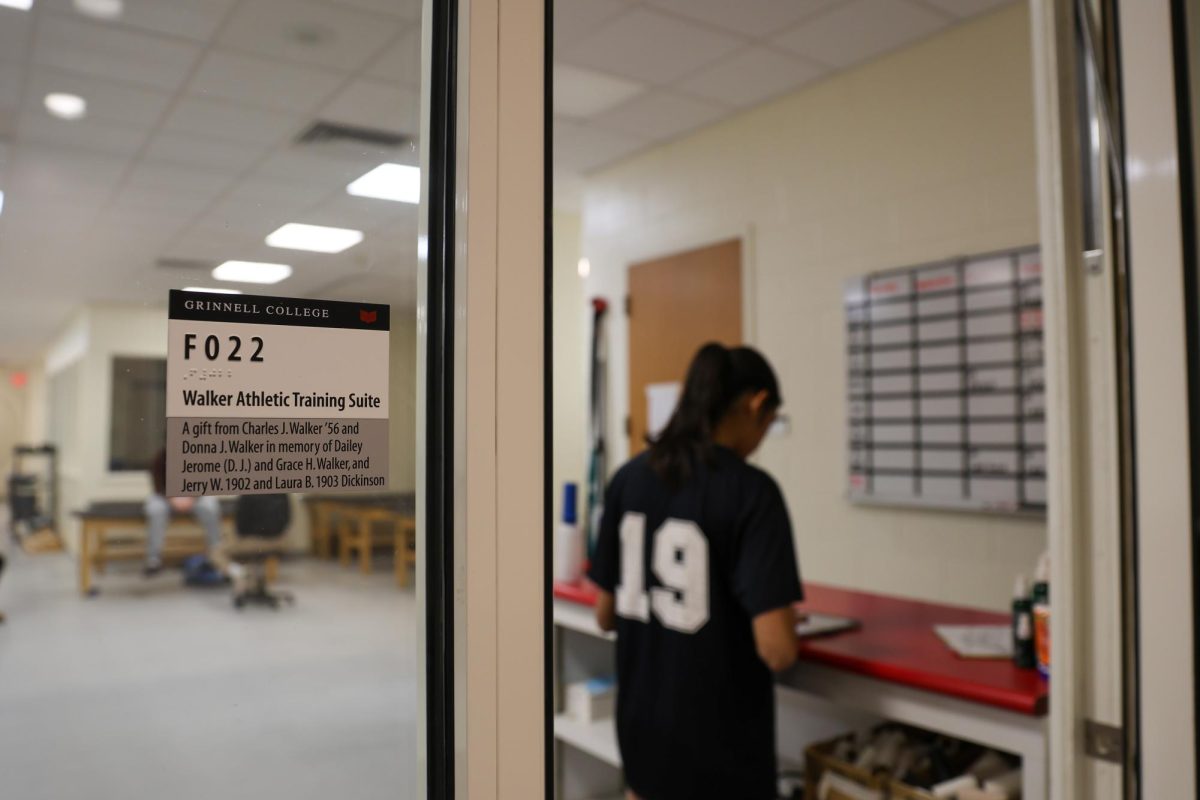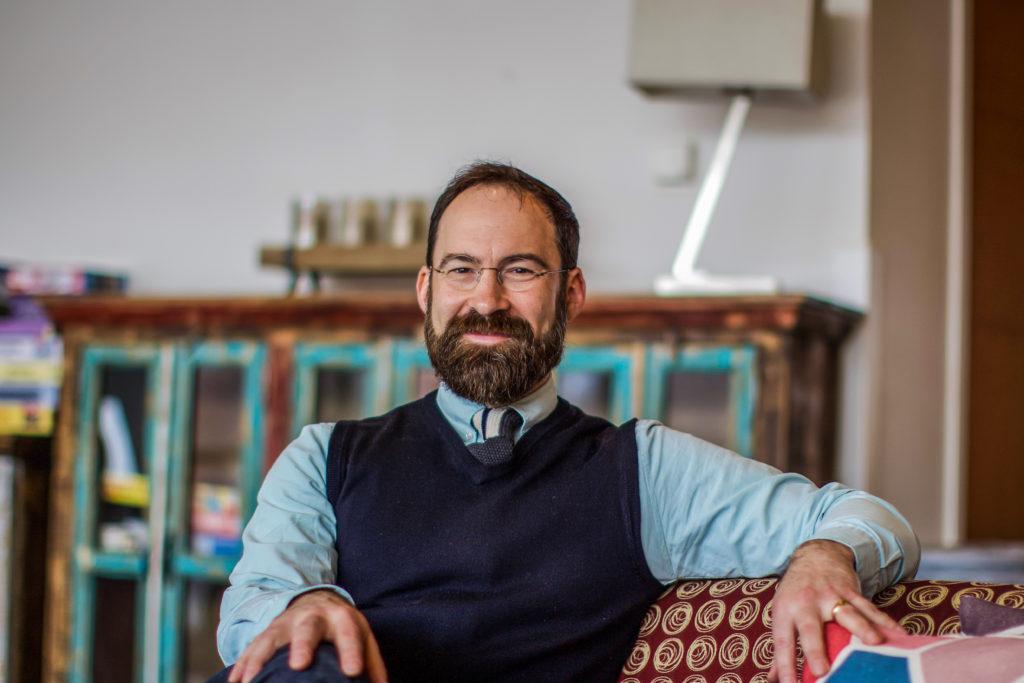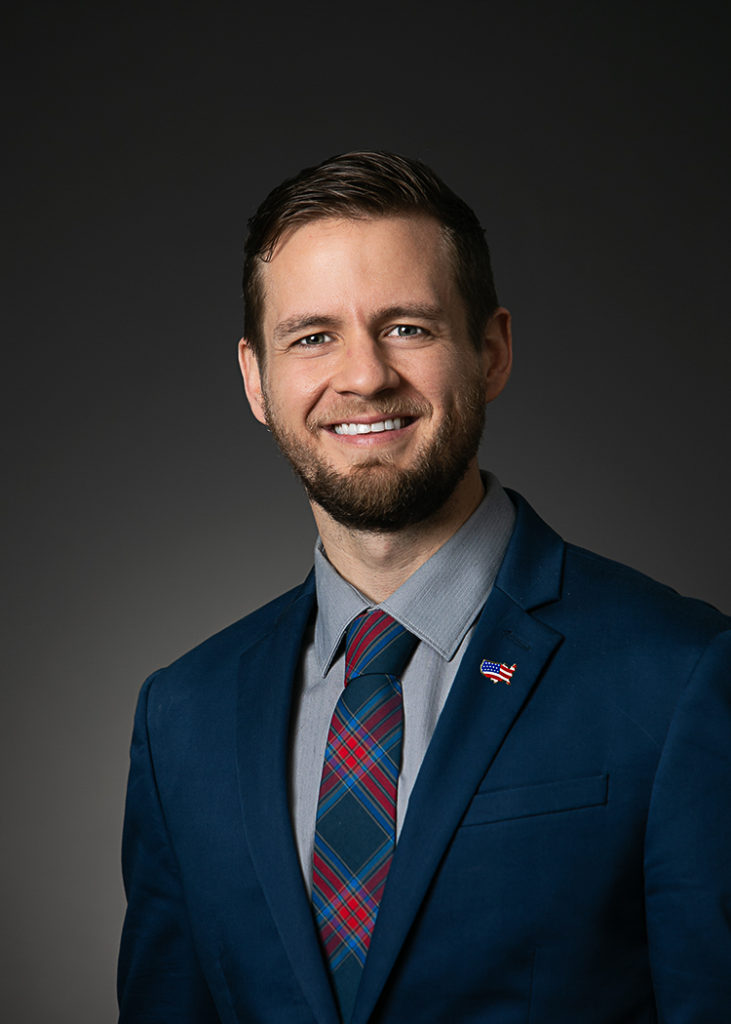Tea Cakarmis ’17 adjusted her body to a graceful pose outside the pool. The crowd roared even louder and the judge’s whistle signaled that the performance had started. The music began to play and the adrenaline rushed in her veins. She jumped into the pool and all of a sudden, she’s enveloped in the complete silence of the water. As she emerged from the pool, she heard the roar of her audience again. She absorbed the energy of the crowd and performed the routine that she has prepared for her entire life.
This is a thrill that Cakarmis, a former member of the Serbian national synchronized swimming team, experienced at the age of 14. And now, she’s bringing this excitement to Grinnell.
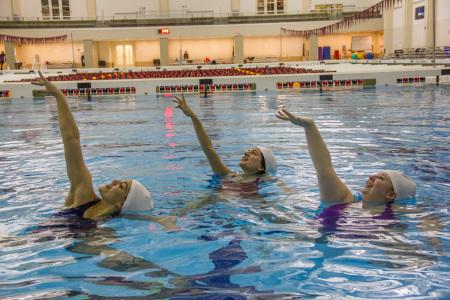
“Synchro is a beautiful hybrid of both sports and arts and I think that is something that a lot of Grinnellians have both affiliations towards—the arts and the sports,” Cakarmis said. “I think it’s so awesome that something can bind those two. I thought, ‘this is my talent and I want to share it with people.’”
Cakarmis began synchronized swimming at the age of seven. She was still very young when she was elected to be a national representative of synchronized swimming.
“You’re 14 and somebody tells you that you’re representing your country,” Cakarmis said. “At that age, that is just a huge weight. The idea that you’re competing under your country’s flag colors is huge.”
But what kept her determined and passionate was the fact that synchro gave her a strong sense of identity that many people her age may not understand.
“I feel like at that adolescence stage where a lot of people go through that identity crisis and existential crisis, I really knew my purpose,” Cakarmis said. “And that helped me tremendously. It showed me that I was good at something and that in itself was such a motivation to discover other things that I was good at.”
When she came to Grinnell in 2013, Cakarmis started to pick up a new division of swimming. She was a member of the women’s diving team during her first year, but deep inside, she still longed for synchronized swimming.
Eventually, that tug was strong enough for her to create the synchronized swimming club, which became the perfect solution for her not only to rediscover her lifetime passion but also to share it.
“So I guess the first motivation [for starting the club] was a selfish one,” she said. “I wanted to do this for me. I needed this club.”
Cakarmis, along with co-founder Karo Marquez-Gil ’17, has been successful in attracting a fair number of participants. Considering synchro meticulously incorporates aspects of both swimming and dance, the club was attractive to individuals with previous ballet and choreography experience.
“There are a lot of connections between ballet and synchronized swimming,” Marquez-Gil said. “Synchronized swimming is basically dancing in the water. It’s not only swimming itself. A lot of the things that Tea has showed us … are things I learned in ballet too.”
Riley Mangan ’15, captain of the women’s water polo club and a fellow synchro swimmer, has also helped Cakarmis in coaching the club members. And the results of the first couple practices have been successful.
“It’s been really fun,” Mangan said. “Everyone’s new to it, so we’ve just been working on the basics. You don’t really need to be able to swim that far. You just need to be comfortable with the water and be open to trying new things.”
But with the club being open to people of all stages of synchro, grounding the skill levels to a common denominator was a challenge to overcome.
“So the first thing was dividing them into groups and then at the end of every practice, I try to establish one exercise that brings the team together,” Cakarmis said. “So the goals were: try to get people as close to the same level as possible, get them to be choreograph-able as soon as possible [and] get them to understand the movement.”
Despite the bumps, the club members are ecstatic to pioneer this new field of synchronized swimming in the Grinnell community.
“From a community level, I would love to expose the greater community—not just Grinnell College but Grinnell—to synchronized swimming,” Cakarmis said. “I think it’s an awesome sport and I think people’s lives are transformed once they see it.”
Historically in Grinnell, some club sports teams have evolved into sports supported by the athletic department. Cakarmis hopes the same will occur with synchronized swimming as well.
“Grinnell soccer—women’s soccer—started with a few girls who wanted to play soccer. Now, women’s soccer is Grinnell’s huge symbol,” she said. “So that just proves that these kinds of clubs do have the quality to develop more.”
With her contribution to the athletic department, she hopes to leave a lasting mark in Grinnell.
“And then a very selfish plan of mine would be to have this club be my mark in Grinnell,” she said. “I think we all suffer from the idea that we’re all such a unique snowflake that people need to remember me, but I really think in introducing something new, you do transform a society in your little small way. And I would love for synchro to be my little small way.”





